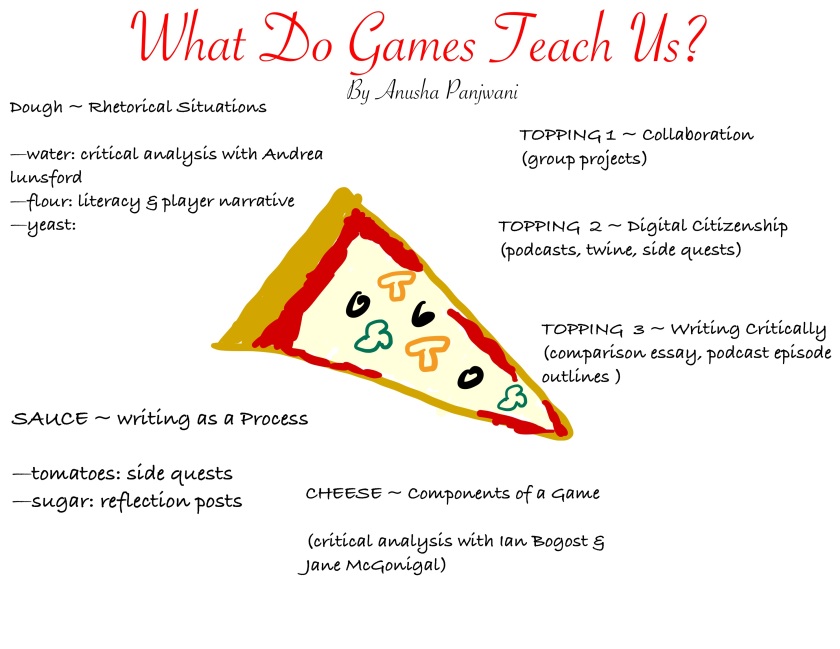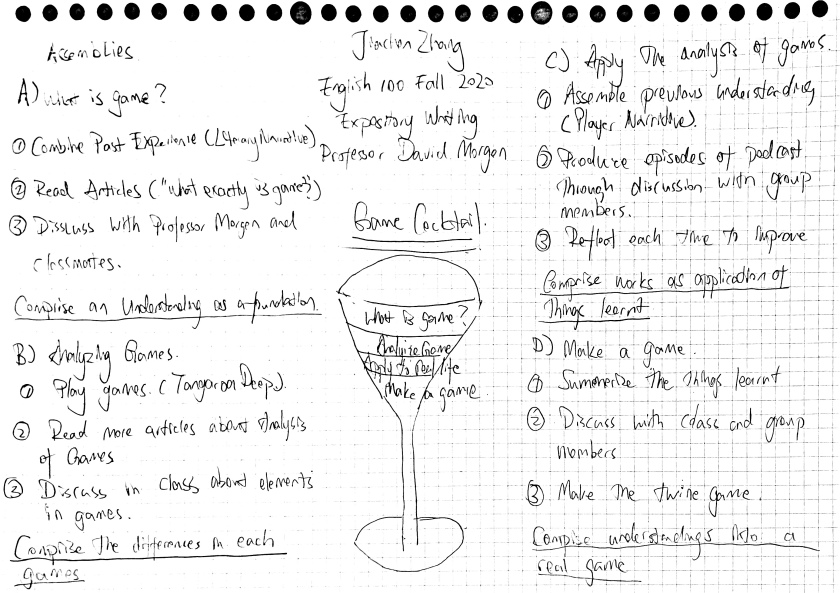Side Quest 10

Rules: Claim one of the three pieces as your own.
Start at Literacy Narrative, move clockwise using dice.
You must master the following at the following tiles to move forward:
Game Comparison: Create inner meaning from two games and then use their similarities and differences to understand an important facet of recovery from trauma.
Depression Quest, Firewatch, Gone Home, Gris: Play the game.
Reflections: Write about what the game meant to you, what you think the developers were trying to say, and how you think they said it.
Movie Scene: Find your favorite movie scene and act in it, making it as real as possible.
Photo-Editing: Practice using Pixlr or Photoshop to make creative edits to photos by combining two photos.
Throw Paper: Throw paper into a wastebasket in the most creative possible way.
Visual Notes: Find the most difficult notes in all of your classes and represent them in a fun, colorful way that is difficult to forget.
Steven Johnson: Understand the key tenets of the first 2 chapters of Everything Bad is Good for Your: How Today’s Popular Culture Is Actuall Making Us Smarter – be able to answer the following questions. What is Johnson’s argument about games? What is Probing and Telescoping? How can games have a medium?
Mary Flanagan: Read through Introduction to Critical Play by Flanagan and denote the main ideas. How are games defined, generally speaking?
SuperBetter: Read the first chapters of Superbetter: The Power of Living Gamefully and write about how games can help us in ways more than just hand-eye coordination.
Ian Bogost: Read 3 of Bogost’s articles: Media Microecology, Empathy, and Don’t Play the Goose Game: Untitled Goose Game is fun. The problem is, all games are also work and free write about the complexity that games instill within us.
Podcast: Create 3 Podcast episodes about games your enjoy playing – collaborate as a group member and make sure your Podcast has a claim – don’t just make it about why games are fun.
End at Player Narrative and Final Portfolio.
Works Cited
Johnson, Steven. Everything Bad Is Good for You: How Today’s Popular Culture Is Actually Making Us Smarter. pp 1-62. New York: Riverhead Books, 2005.
McGonigal, Jane. Superbetter: How a Gameful Life Can Make You Stronger, Happier, Braver and More Resilient. Element Books (UK), 2016.




